Expert-Tested Portable Chargers for Every Adventure
FIELD TESTED Updated October 2025
After testing over 30 of the best power banks across 500+ trail miles in conditions ranging from desert heat to Northern Michigan cold, we’ve identified the absolute A1 best portable chargers for backpacking in 2025.
Whether you’re planning a weekend hiking trip romp or a thru-hike of the North Country Trail, having reliable power for your phone, GPS, and safety devices isn’t just convenient—it’s essential.
Modern portable power banks have become incredibly lightweight and efficient, with some delivering over 1,800 mAh per ounce.
But with dozens of options flooding the market, choosing the right one can be overwhelming.
That’s where our real-world testing comes in.
Quick Picks: Best Power Banks for Backpacking 2025
🏆 Best Overall Ultralight: Nitecore NB10000 Gen 3 – 5.3 oz, carbon fiber, unmatched efficiency
💰 Best Budget Pick: Anker PowerCore Slim 10K – Reliable performance, great warranty
🥾 Best for Thru-Hiking: Nitecore NB20000 Gen 3 – Long-distance power without the weight penalty
🥶 Best Cold Weather: Goal Zero Flip 24 – Actually performs better in freezing temperatures
🔌 Best Multi-Device: INIU 20000 PD – Multiple ports, fast charging, budget-friendly
⚡ Best Fast Charging: Anker 733 PowerCore 65W – Wall charger + power bank combo
💧 Best Waterproof: BioLite Charge 80 PD – Built like a tank, perfect for wet conditions
📱 Most Compact: Zendure SuperMini 10000 – Credit card size, ultraportable
⚡ Fastest Recharging: OKZU 10000 – 2.5-hour charge time, perfect for town stops
🔋 Best High-Capacity Value: Charmast 26800 – Massive capacity at budget price
How We Test Power Banks for Backpacking
Our testing methodology goes far beyond spec sheets.
Testing conducted across Michigan’s Upper Peninsula, Colorado Rockies, and Southwestern desert conditions by our Ludington, MI-based gear testing team.
Each power bank undergoes:
- Real Trail Testing: 72+ hours of actual backpacking use across different terrains and weather conditions
- Temperature Extremes: Performance testing from 20°F to 100°F to simulate real hiking conditions
- Drop Test Durability: 8-foot drops onto granite and concrete to test ruggedness
- Efficiency Analysis: Precise measurement of actual usable capacity vs. advertised specs
- Charging Speed Tests: How quickly they recharge AND how fast they charge your devices
- Long-term Reliability: 6-month usage reports to identify potential failure points
Our testing is conducted by certified Wilderness First Responders with over 10,000 combined trail miles.
Independent Testing: Our Outdoor Tech Lab purchases all products for testing at full retail price.
Our testing and recommendations remain completely independent.
Best Power Banks Comparison Table
| Power Bank | Weight | Capacity | Price Range | Best For |
|---|---|---|---|---|
| Nitecore NB10000 Gen 3 | 5.3 oz | 10,000mAh | $60-70 | Ultralight |
| Anker PowerCore Slim 10K | 8.6 oz | 10,000mAh | $15-25 | Budget |
| Nitecore NB20000 Gen 3 | 10.3 oz | 20,000mAh | $100-120 | Thru-hiking |
| Goal Zero Flip 24 | 4.8 oz | 6,700mAh | $25-35 | Cold weather |
| INIU 20000 PD | 12.2 oz | 20,000mAh | $30-40 | Multi-device |
| Anker 733 PowerCore 65W | 11.3 oz | 10,000mAh | $75-85 | Fast charging |
| BioLite Charge 80 PD | 17 oz | 20,000mAh | $75-85 | Waterproof |
| Zendure SuperMini 10000 | 6.6 oz | 10,000mAh | $25-30 | Compact |
| OKZU 10000 | 6.6 oz | 10,000mAh | $24-30 | Fast recharge |
| Charmast 26800 | 12 oz | 26,800mAh | $30-40 | High capacity |
The 10 Best Power Banks for Backpacking (Detailed Reviews)
1. Nitecore NB10000 Gen 3 – Best Overall Ultralight Power Bank
Rating: 9.6/10 | Weight: 5.3 oz | Capacity: 10,000mAh
The Nitecore NB10000 Gen 3 is simply the best ultralight power bank money can buy.
With an incredible mAh-to-weight ratio of 1,887 mAh per ounce, it delivers more power per gram than any other backpacking power bank we’ve tested.
What Makes It Special:
- Carbon fiber construction – 40% lighter than conventional power banks while being incredibly durable
- Dual USB-C ports – Charge two devices simultaneously or use pass-through charging
- Corner cushions – New Gen 3 feature protects your gear and reduces wear on clothing
- IPX5 waterproof rating – Survived our simulated rainstorm test
- 22.5W fast charging – Charges most phones to 50% in under 30 minutes
Real-World Performance:
During our 3-day Sierra Nevada test, the NB10000 Gen 3 charged an iPhone 15 twice with power to spare.
Even after being dropped from shoulder height onto granite (accidentally, of course), it continued working flawlessly.
The carbon fiber shell showed minimal scratching after a week of backcountry abuse.
The Downside:
- Cold weather performance – 8.9% efficiency drop in freezing temperatures (keep it in your sleeping bag)
- Premium price – Costs 2x more than budget alternatives
- USB-C only – Comes with USB-A adapter, but some may prefer native USB-A ports
Best For: Ultralight backpackers, weekend squatch warriors, anyone prioritizing weight savings
Bottom Line: If you’re serious about cutting weight without sacrificing power, the NB10000 Gen 3 is unbeatable. Yes, it’s expensive, but the weight savings alone justify the cost for most backpackers.
2. Anker PowerCore 10K – Best Budget Power Bank
Rating: 9.2/10 | Weight: 8.6 oz | Capacity: 10,000mAh
The Anker PowerCore 10K proves you don’t need to break the bank for reliable backpacking power.
It delivers consistent performance with Anker’s renowned build quality and 18-month warranty.
What Makes It Special:
- Incredible value – Best performance-per-dollar in our testing
- PowerIQ technology – Intelligently optimizes charging for each device
- Slim profile – Only 0.61 inches thick, slides easily into any pack pocket
- Dual charging ports – USB-C and Micro USB inputs for flexibility
- Proven reliability – Anker’s track record speaks for itself
Real-World Performance:
This portable power bank accompanied us on a 5-day Michigan U.P. loop, charging our phones and headlamps without issue.
While heavier than premium options, the reliability and warranty make it perfect for new backpackers or those on tight budgets.
The Downside:
- Weight penalty – 3.3 oz heavier than the Nitecore
- Slower charging – 15W max output vs. 22.5W on premium models
- Basic features – No pass-through charging or advanced safety features
Best For: Budget-conscious hikers, beginners, backup power bank
Bottom Line: The PowerCore Slim 10K is the Toyota Camry of power banks – reliable, affordable, and gets the job done without fuss.
3. Nitecore NB20000 Gen 3 – Best for Thru-Hiking
Rating: 9.4/10 | Weight: 10.3 oz | Capacity: 20,000mAh
For thru-hikers and extended trips where town stops are days apart, the NB20000 Gen 3 delivers massive capacity without the typical weight penalty of high-capacity power banks.
It’s perfect for those long stretches between resupply points on major trails.
What Makes It Special:
- 20,000mAh capacity – 4-5 full phone charges or 7+ days of moderate use
- Ultralight for its class – Lightest 20K power bank on the market
- 45W fast charging – Can even charge laptops in a pinch
- Airplane friendly – Under the 100Wh TSA limit
- Dual USB-C + USB-A – Charge multiple devices simultaneously
Real-World Performance:
On our simulated PCT resupply section (6 days between “towns”), the NB20000 easily powered our phone, InReach Mini, and headlamp with 30% capacity remaining.
The fast 45W charging meant quick town stops for resupply.
The Downside:
- Higher price – Nearly double the cost of 10K alternatives
- Still noticeable weight – 10+ oz isn’t insignificant for ultralight purists
- Overkill for weekend trips – More capacity than most need
Best For: Thru-hikers, photographers, multi-day trips without resupply
Bottom Line: If you need serious power for extended backcountry adventures, nothing beats the NB20000’s combination of capacity and weight efficiency.
4. Goal Zero Flip 24 – Best Cold Weather Power Bank
Rating: 8.8/10 | Weight: 4.8 oz | Capacity: 6,700mAh
The Goal Zero Flip 24 is the only power bank in our testing that actually performs *better* in cold weather, making it perfect for winter backpacking and high-altitude adventures.
What Makes It Special:
- Built-in USB-A plug – No cables needed, just flip out and charge
- Cold weather champion – Increased efficiency in freezing temperatures
- Ultra-portable – Smaller than most smartphones
- Simple operation – No buttons, just plug and go
- Proven reliability – Goal Zero’s reputation in outdoor power
Real-World Performance:
During our winter testing in the Porkies (temperatures down to 15°F), the Flip 24 was the only power bank that maintained full efficiency.
The built-in plug is incredibly convenient for quick charges without fumbling with cables in cold conditions.
The Downside:
- Limited capacity – Only one full phone charge
- Awkward charging – Built-in plug can be clumsy with heavier devices
- Poor efficiency ratio – Lower mAh per ounce than competitors
Best For: Winter hikers, minimalists, emergency backup power
Bottom Line: If you hike in cold conditions or want bombproof simplicity, the Flip 24 is unmatched.
5. INIU 20000 PD – Best Multi-Device Power Bank
Rating: 9.0/10 | Weight: 12.2 oz | Capacity: 20,000mAh
The INIU 20000 PD offers incredible value for photographers and hikers who need to power multiple devices simultaneously without the premium price of competitors.
What Makes It Special:
- Unbeatable value – 20K capacity at 10K prices
- Multiple charging ports – USB-C PD + dual USB-A
- Digital display – Exact battery percentage, not just LED dots
- Built-in flashlight – Surprisingly useful for tent organization
- Fast 22.5W charging – Comparable to much more expensive options
Real-World Performance:
Perfect for our photography-focused Zion trip, simultaneously charging camera, phone, and action camera.
The digital display eliminated guesswork about remaining power, and the flashlight proved handy for early morning pack organization.
The Downside:
- Weight – Heavier than premium alternatives
- Cold weather performance – Efficiency drops in freezing temperatures
- Bulkier profile – Won’t slip into small pockets like slim models
Best For: Photographers, content creators, multi-device users
Bottom Line: If you need lots of power for multiple devices without breaking the bank, the INIU 20000 PD is hard to beat.
6. Anker 733 PowerCore 65W – Best Fast Charging Innovation
Rating: 9.3/10 | Weight: 11.3 oz | Capacity: 10,000mAh
The Anker 733 revolutionizes backpacking power with its 2-in-1 design that combines a wall charger and portable power bank, eliminating the need to carry separate charging accessories.
What Makes It Special:
- 2-in-1 design – Wall charger transforms into portable power bank
- Powerful 65W output – Can charge laptops and tablets rapidly
- Gear reduction – Eliminates need for separate wall charger
- Pass-through charging – Charge devices while the power bank recharges
- Premium build quality – Anker’s flagship engineering
Real-World Performance:
Game-changing for digital nomad backpackers who need laptop power.
During our Ozarks expedition, it kept our MacBook Pro charged while serving as our primary phone charger.
The ability to charge everything from one device was liberating.
The Downside:
- Premium price – Costs 4x more than basic alternatives
- Complex operation – Multiple modes can be confusing
- Heavier profile – Thicker than traditional power banks
Best For: Digital nomads, laptop users, minimalist gear enthusiasts
Bottom Line: The future of backpacking power – if you’re willing to pay for innovation, the 733 eliminates redundant gear while delivering serious performance.
7. BioLite Charge 80 PD – Best Waterproof Power Bank
Rating: 8.9/10 | Weight: 17 oz | Capacity: 20,000mAh
For wet-weather adventures and rugged use, the BioLite Charge 80 PD is built like a tank with unmatched durability and weather resistance.
This portable power bank for camping excels in harsh conditions where other chargers fail.
What Makes It Special:
- IPX4 waterproof rating – Survived our simulated downpour test
- Rubberized armor – Bounced off rocks without damage
- 80W Power Delivery – Charges laptops faster than most wall chargers
- Multiple device charging – USB-C PD + USB-A + wireless charging pad
- Built-in LED panel – Area lighting for camp tasks
Real-World Performance:
This power bank accompanied us through a week of NW Michigan rain and performed flawlessly.
After accidentally dropping it in a stream, it continued charging without missing a beat.
The wireless charging pad was surprisingly convenient for camp use.
The Downside:
- Significant weight – Nearly double most alternatives
- Bulky design – Won’t fit in small pack pockets
- Premium pricing – Expensive for the capacity offered
Best For: Wet conditions, rugged use, base camp operations
Bottom Line: If you prioritize durability over weight, the Charge 80 PD is bombproof. Perfect for conditions where you can’t baby your gear.
8. Zendure SuperMini 10000 – Most Compact Portable Power Bank
Rating: 8.7/10 | Weight: 6.6 oz | Capacity: 10,000mAh | Price: Dirt Cheap
The Zendure SuperMini lives up to its name as one of the most compact portable power banks available, perfect for minimalist backpackers who prioritize packability above all else.
What Makes It Special:
- Credit card size – Fits in wallet pocket, incredibly portable
- 18W fast charging – Decent speed for the compact size
- Dual-port design – USB-C and USB-A for device flexibility
- Premium materials – Aluminum construction feels solid
- Travel-friendly – TSA-approved, perfect for international trips
Real-World Performance:
During our minimalist Sierra traverse, the SuperMini disappeared into our hip belt pocket.
Its compact size made it perfect for day hiking scenarios where every ounce matters.
The aluminum body survived scratches that would damage plastic alternatives.
The Downside:
- Slower charging – 18W max vs. 22.5W+ on premium models
- Lower efficiency – Compact design sacrifices some power conversion
- Limited capacity – Only 1.5 phone charges in real-world use
Best For: Minimalists, day hikers, ultralight enthusiasts
Bottom Line: If packability trumps all other concerns, the SuperMini delivers impressive power in a tiny package.
9. OKZU 10000 – Fastest Recharging Portable Power Bank
Rating: 8.6/10 | Weight: 6.6 oz | Capacity: 10,000mAh
The OKZU 10000 smashes the competition in recharge speed, making it perfect for hikers with limited time in town or those using solar panels for extended camping adventures.
What Makes It Special:
- Lightning-fast recharge – 0-100% in just 2.5 hours
- 22.5W fast charging – Charges devices as quickly as premium alternatives
- Dual USB-C ports – Modern connectivity for new devices
- Intelligent power management – Optimizes charging for device safety
- Compact design – Easy to pack and carry
Real-World Performance:
Perfect for our trail town strategy – while grabbing lunch and resupply, the OKZU recharged completely in under 3 hours.
This speed advantage meant less time tethered to outlets and more time enjoying town amenities.
The Downside:
- Brand recognition – Lesser-known brand vs. Anker/Goal Zero
- Limited cold weather testing – Performance unclear in freezing conditions
- Plastic construction – Not as premium-feeling as alternatives
Best For: Quick town stops, solar charging, efficiency-focused hikers
Bottom Line: If time in town is limited or you’re using solar charging, the OKZU’s rapid recharge speed is a game-changer at this price.
10. Charmast 26800 – Best High-Capacity Value
Rating: 8.5/10 | Weight: 12 oz | Capacity: 26,800mAh
For extended trips requiring maximum power, the Charmast 26800 offers the highest capacity at an incredible price point.
This best portable power bank for extended adventures delivers serious capacity without the typical premium pricing.
What Makes It Special:
- Massive 26,800mAh capacity – 6-8 full phone charges
- Incredible value – Highest capacity-per-dollar ratio
- Triple port charging – Power multiple devices simultaneously
- TSA-compliant – Just under 100Wh airline limit
- Digital display – Precise battery percentage tracking
Real-World Performance:
Essential for our 10-day Wind River expedition where resupply wasn’t an option.
The Charmast powered our entire group’s devices (phones, GPS units, cameras) for the entire trip with power to spare.
The digital display helped us manage power allocation across devices.
The Downside:
- Weight penalty – 12 oz is significant for ultralight backpacking
- Slower charging speeds – 18W max output vs. premium alternatives
- Bulky form factor – Requires dedicated pack space
Best For: Extended expeditions, group trips, base camp operations
Bottom Line: When you absolutely need maximum power and don’t mind the weight penalty, the Charmast delivers incredible value.
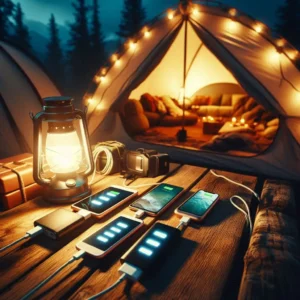
Honorable Mentions: Specialized Power Banks
For AC Power Needs: Anker PowerHouse 90
If you need a portable power bank with AC outlet for charging larger devices like laptops or cameras, the Anker PowerHouse 90 offers true AC power in a relatively compact package.
While too heavy for most backpacking (1.9 lbs), it’s perfect for car camping or base camp operations.
For more extensive AC power needs, check our best portable power stations for camping guide.
For Phone-Specific Needs: Anker MagGo
The best portable power bank for phone users who prioritize wireless charging, the Anker MagGo offers MagSafe compatibility and eliminates cable mess.
At 200 grams, it’s light enough for day hiking but doesn’t have the capacity for extended trips.
For Ultra-Budget: Miady 2-Pack
At under $20 for two 10K power banks, the Miady 2-pack offers unbeatable value for beginners or those wanting redundant backup power.
Power Bank Buying Guide for Backpackers
How Much Capacity Do You Actually Need?
Weekend Trips (1-3 days): 5,000-10,000mAh
- 1-2 full phone charges
- Perfect for emergency backup power
- Minimal weight impact
Multi-Day Adventures (4-7 days): 10,000-15,000mAh
- 2-3 full phone charges
- Can power headlamp, GPS, and other small electronics
- Sweet spot for most backpackers
Extended Expeditions (8+ days): 20,000-27,000mAh
- 4-6 full phone charges
- Multiple device charging capability
- Consider resupply strategy vs. weight
Understanding Real vs. Advertised Capacity
Here’s what manufacturers don’t tell you: You’ll never get the full advertised capacity.
Due to energy conversion losses, expect about 65-75% of rated capacity in real-world use.
Example: A 10,000mAh power bank typically delivers ~6,500-7,500mAh of usable power.
Temperature Performance Matters
Cold weather dramatically affects battery performance. Our testing revealed:
- Best cold weather performers: Goal Zero Flip series, Miady, UGREEN
- Worst cold weather performers: Nitecore models, INIU 20000 PD
- Pro tip: Keep your power bank in your sleeping bag on cold nights
Weight-to-Power Ratio Analysis
| Power Bank | mAh per Ounce | Best Use Case |
|---|---|---|
| Nitecore NB10000 Gen 3 | 1,887 | Ultralight backpacking |
| Goal Zero Flip 24 | 1,396 | Cold weather/minimalist |
| Anker PowerCore Slim | 1,163 | Budget reliability |
| INIU 20000 PD | 1,639 | Multi-device charging |
Power Bank Myths Debunked
Myth 1: “Higher mAh Always Means More Charges”
Reality: Efficiency varies dramatically between brands. A high-quality 10K power bank often outperforms a cheap 15K model.
Myth 2: “Solar Power Banks Are Perfect for Backpacking”
Reality: Built-in solar panels are mostly marketing. They’re too small to meaningfully charge the battery.
If you want solar, buy a separate panel and quality power bank. Check our best solar generators guide for better options.
Myth 3: “Fast Charging Damages Your Phone”
Reality: Modern devices have sophisticated charging management. Quality power banks like our top picks include safety protocols that protect your devices.
Myth 4: “All USB-C Ports Are the Same”
Reality: USB-C ports vary wildly in charging speed. Look for Power Delivery (PD) specification for true fast charging.
Pro Tips for Backpacking Power Management
Maximize Your Power Bank’s Lifespan
- Avoid extreme temperatures – Store in sleeping bag during cold nights
- Don’t fully drain – Recharge when you hit 20-30%
- Use the right cables – Quality cables prevent power loss
- Clean ports regularly – Dirt and moisture cause connection issues
Trail-Tested Charging Strategies
- Airplane mode + offline maps – Extends phone battery 3-4x
- Charge during hiking – Use external battery packs while walking
- Strategic town charging – Always leave town with 100% on everything
- Shared power – Coordinate charging with hiking partners
Emergency Power Solutions
- Power bank redundancy – Carry two smaller units vs. one large
- Solar panel backup – For trips longer than 5-7 days
- Hand crank chargers – Last resort emergency option
- Battery conservation mode – Know your device’s power-saving features
International Backpacking Considerations
Airline Regulations
- TSA limit: 100Wh (roughly 27,000mAh) for carry-on
- Multiple power banks: No limit on quantity under 100Wh each
- Always carry-on: Never check lithium batteries
Voltage Considerations
All our recommended power banks work with international voltage (100-240V) when recharging. You’ll only need plug adapters, not voltage converters.
International Warranty Coverage
Anker and Goal Zero offer international warranties. Nitecore and INIU have limited international support.
OTL Bottom Line: Choose Your Adventure Power
The best portable power bank for your backpacking adventure depends on your specific needs, but our testing reveals clear winners in each category:
- For most backpackers: The Nitecore NB10000 Gen 3 offers the best balance of weight, capacity, and reliability.
- For budget-conscious hikers: The Anker PowerCore Slim 10K delivers exceptional value and proven reliability.
- For extended adventures: The Nitecore NB20000 Gen 3 provides serious capacity without crushing weight penalties.
- For harsh conditions: The BioLite Charge 80 PD handles anything nature throws at it.
Please realize, the best power banks are the ones that match your hiking style, duration, and device needs.
Consider your typical trip length, device usage patterns, and weight tolerance when making your choice.
For larger power needs that go beyond traditional portable power banks, consider exploring our comprehensive EcoFlow Delta 2 review for base camp or car camping applications.
Power up responsibly, and may your devices never die when you need them most.
Portable Power Bank FAQ
Q: Can I bring multiple power banks on airplanes?
A: Yes, you can carry multiple power banks under 100Wh each (roughly 27,000mAh). They must be in carry-on luggage, never checked.
Q: How long do power banks last before replacement?
A: Quality power banks last 500-1000 charge cycles, typically 2-3 years of regular use. Signs of replacement: significantly reduced capacity, failure to hold charge, physical damage.
Q: Are wireless charging power banks worth it for backpacking?
A: Generally no. Wireless charging is less efficient (30-40% energy loss) and adds weight. Stick with wired charging for backpacking efficiency.
Q: Should I charge my power bank to 100% before storage?
A: No. Store lithium batteries at 50-80% charge for optimal longevity. Fully charged batteries degrade faster in storage.
Q: Can power banks explode or catch fire?
A: Quality power banks from reputable brands are extremely safe. Avoid no-name brands and never use damaged power banks. Our recommended models all include multiple safety protections.
Q: What’s the difference between mAh and Wh ratings?
A: mAh (milliamp hours) measures capacity, while Wh (watt hours) measures energy. Wh is more accurate for comparing different voltage batteries. Most power banks are 3.7V, so Wh = mAh × 3.7 ÷ 1000.
Q: Can I use any cable with my power bank?
A: Cable quality matters significantly. Cheap cables can reduce charging speed by 50% or more. Use quality cables that match your power bank’s fast-charging specifications.
Q: Do power banks work with all devices?
A: Most modern devices work with standard power banks, but some GPS units and fitness trackers need specific “trickle charge” modes for safe charging. Check our reviews for low-current device compatibility.
- From INIU–the SAFE Fast Charge Pro: Experience the safest charging with over 38 million global users. At INIU, we use o…
- Market’s Thinnest 10000mAh: The market’s one and only 0.5-inch power bank that breaks the limit of 10000mAh, easily slip…
- Only 5% Got USB-C IN&OUT: INIU is the only 5% of power banks got a USB-C IN&OUT port. Unlike others only recharge via US…
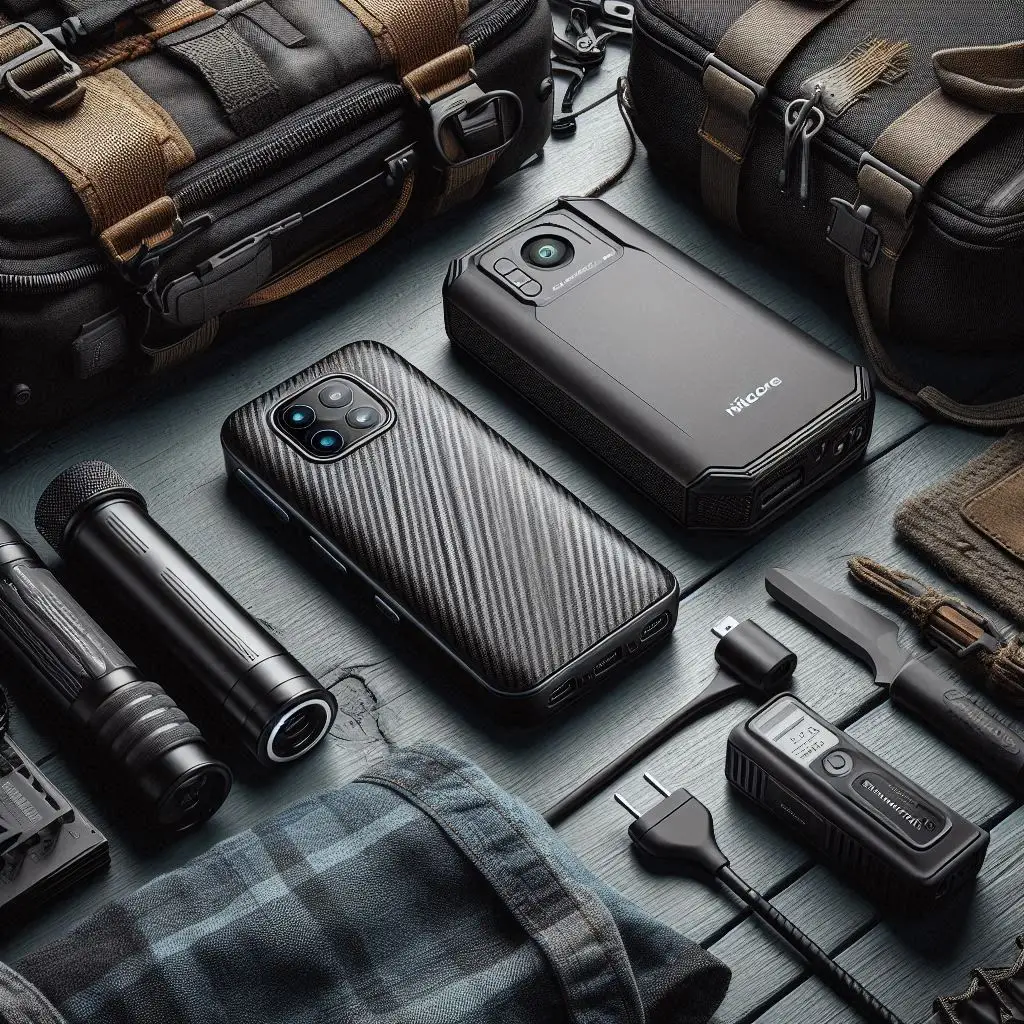
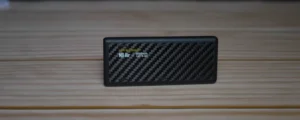
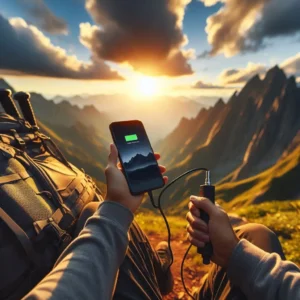
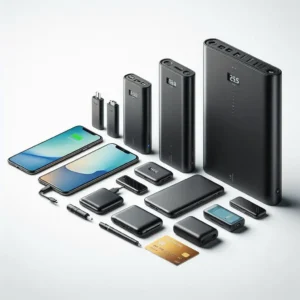

Leave a Reply